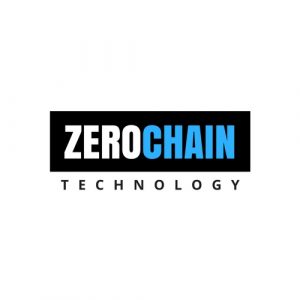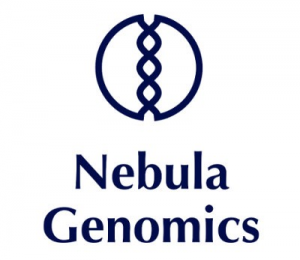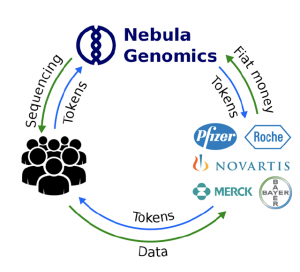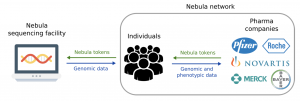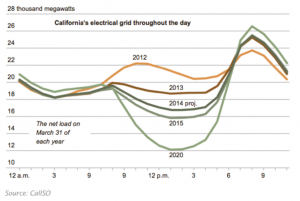
Opportunity
Blockchain technology for the use of rewards distribution presents a large opportunity, especially within the content and social media space. There are numerous forums that exist today where users can share news and other content. From Facebook newsfeed to Twitter to Reddit, users are inundated with posts the moment they log in. However, there hasn’t yet surfaced a real solution for monetizing the sharing of content or the voting of quality by readers. Monetization would accomplish two different goals: a) incentivize more users to post and evaluate posts and b) incentivize higher quality in posts overall.
User-generated content creates billions of dollars of value for the shareholders of social media companies (i.e. the intermediaries). In 2016, global revenue from social media was $32.8 billion. In 2019, global revenues are expected to reach $47.6 billion.
Recently however, existing platforms like YouTube have modified their monetization rules, reducing the level of transparency and causing consternation among nearly all the channels. The new monetization rules have resulted in a loss of $100 a year in advertising revenue per content creator. Losing even a tiny profit can dissuade a small creator who may be just getting started, and the majority of YouTube comprises small creators. Not focusing on the small creators could create a significant change in the platform as a whole, since a majority of people on the platform are up and coming content creators and a shift could trigger a waterfall effect.
“It discourages everyone else from building a channel from the ground up, subscriber by subscriber, week by week, the way so many original YouTubers did,” says Matt Wallace, a writer and YouTuber with a modest audience.
Solution
Steem was developed as a blockchain-based rewards platform for publishers to monetize content and grow community. It’s the first application that attempts to accurately and transparently reward individuals who make subjective contributions to its community, for example by submitting blog posts or voting on articles, images and commentary, and consequently increasing their popularity. Steemit is the proof of concept created to enable users to participate in these use cases.
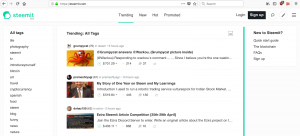
Steem is based on two founding principles.
- The most important principle is that everyone who contributes to a venture should receive pro-rata ownership, payment or debt from the venture. This principle is the same principle that is applied to all startups as they allocate shares at founding and during subsequent funding rounds.
- The second principle is that all forms of capital are equally valuable. This means that those who contribute their scarce time and attention (i.e., “sweat equity”) toward producing and curating content for others are just as valuable as those who contribute their scarce cash.
Users are paid half in “Steem Power,” a token that supercharges voting power, and half with Steem Dollars, a token worth about three USD.
Steem scores on a number of achievements. First, it enables the creation of a community where users can share and read about what is important to them. Second, it allows for a ranking of content, where the most interesting and pressing issues appear first. This is also a byproduct of awarding users with quality posts and higher usage more Steem Power. Third, it generates revenue for the company, income for users, and more value to Steem.
In addition to powering the Steemit community, Steem is a platform that can be used by any company to power the development of its online communities. Additional online communities powered by the Steem blockchain are likewise tied to Steem’s tokens, and therefore those communities’ successes confer benefits to all other Steem communities because they can enhance the perceived market value of those tokens. As a result, because Steem is essentially a platform for building platforms and because those platforms all experience positive externalities as they become individually successful, Steem is inherently predisposed towards virtuous cycles of user adoption and increasing value as it gains traction.
Effectiveness & Competitive Landscape

Through the use of Smart Media Tokens (SMTs) and a decentralized approach, Steem has successfully distributed $40.15M in rewards to over 920.8K users of its social media application, Steemit. Besides Steem, there are a number of blockchain-based platforms that allow developers to build and deploy decentralized applications, such as Bitcoin, Ethereum and EOS. While some of these may be more established than Steem, none are as closely tied to the performance of content creation. In addition, whereas Bitcoin relies on mining to generate new currency units, the Steem network creates new tokens everyday and automatically distributes them to creators based on community voting.
Within the social media space, Steemit’s openness and merit-based system continues to attract users and differs from centralized, content-driven social networks, such as Facebook and YouTube, whereby censorship and lack of transparency over monetization, has been a major concern for creators and publishers. Although Reddit and Medium implement similar upvote/downvote systems and have a large built-in user base (making it easy for bloggers to be discovered), the same problem of being bound by the platform’s rules and generating value for the site versus the contributor, still exists. As such, there has been an influx of interest in cryptocurrency-backed social networks, with companies such as Synereo, Akasha and YoYow, operating within the same space as Steemit. However, Steemit has a significant incumbent advantage. Given the importance of network effects and the perceived value of a Steem token, which would have more credibility than one established by a newcomer, creators are more incentivized towards publishing quality content on Steemit over others.
Improvements & Suggestions
In its current form, Steem rewards those who either invest cash or make valuable contributions to the community. Doing either of these will give a user more Steem Power (SP), which in turn gives them more influence over what content is elevated to the top. In other words, it is possible to purchase power. This problem could be mitigated by Steem-powered platforms capping the influence a user can have on the visibility and popularity of user-generated content (UGC). For example, users could choose to view and sort UGC in two different ways – number of views and amount of Steem Power. This would help prevent “viral” individuals from gaining outsized amount of influence on the platform.
Another potential improvement that would help Steem gain traction is implementing and enforcing rules around etiquette. For example, there are currently no rules against upvoting your own content, plagiarizing content, or spamming posts or content in a single day. Once Steem gains critical mass, there will be an inevitable influx of users who abuse the system. Thus, Steem-powered platforms will need to create well-defined rules, such as encouraging surrounding acceptable behavior and flagging content for copyright violations. This can be enforced by moderators, which are common in many other UGC-based platforms.
Because Steem is a tool designed to accelerate adoption for platforms as well as to increase the quality of users’ contributions to them, we can see that its blockchain technology could lend itself to many of the traditional spaces that depend on network effects and user communities. Along these lines, one future application we envision for Steem is online gaming. Success in online gaming is heavily dependent on creating a sizable, engaged community of users who participate in any number of ways including creating in-game content (“mods”), broadcasting online matches on platforms like Twitch and YouTube (“streaming”), creating user communities that play together on a regular basis, and creating fan art to display passion for the game. Individual games using freemium models that are the most successful in creating these communities are able to generate revenues in excess of $100 million per month, but most struggle to gain initial user traction because of the difficulty in demonstrating that their communities are welcoming to all users and sustaining users’ interest over a long period of time. In addition, even wildly successful gaming platforms like Steam (not affiliated with Steem) have struggled to create monetary systems to reward users for their contributions. By enabling gaming platforms to reward their users by linking popularity, performance, and community interactions to influence or in-game currency, Steem can accelerate online gaming communities’ growth and incentivize more sustained, positive interaction within them. This would increase the amount of time users spend engaged with certain platforms, and the cross-platform reward system can further foster user loyalty. This could also give game developing companies another metric they can use to evaluate and refine future iterations of their games.
Thus, our recommendation is that in the same way that Steem has created the Steemit community as a proof of concept for developers to use in creating social media platforms, we recommend that Steem work to create a version in other complementary industries, such as online gaming.
Sources
https://steemit.com/faq.html
https://steem.io
https://www.finder.com/steem
https://www.wired.com/story/the-social-network-doling-out-millions-in-ephemeral-money/
https://www.statista.com/statistics/562397/worldwide-revenue-from-social-media/
https://steemit.com/steem/@steemrollin/steem-where-does-the-money-come-from
https://www.wired.com/story/youtube-monetization-creators-ads/
https://www.wired.com/story/decentralized-social-networks-sound-great-too-bad-theyll-never-work/
https://steemit.com/steemit/@johnnyfdk/why-i-started-posting-on-steemit-instead-of-medium-reddit-or-johnnyfd-com
https://steemit.com/steemit/@thecryptofiend/the-complete-steemit-etiquette-guide-revision-2-0
https://steemit.com/steemit/@catharcissism/4-sites-likes-steemit-to-keep-your-eye-on
https://steemit.com/blockchain/@claudiop63/any-steemit-competitor-out-there-a-layman-s-perspective
http://www.kotaku.co.uk/2015/07/09/how-valve-messed-up-paid-mods-on-steam
https://www.forbes.com/sites/davidthier/2018/03/22/report-heres-how-much-money-fortnite-battle-royale-is-making/#37036c2870ff
https://abovethelaw.com/2018/02/how-blockchain-just-may-transform-online-copyright-protection/
https://coincentral.com/what-is-steem/
https://steemit.com/steemit/@thecryptofiend/how-to-improve-steemit-my-thoughts
Team
Siddhant Dube
Eileen Feng
Nathan Stornetta
Tiffany Ho
Christina Xiong
